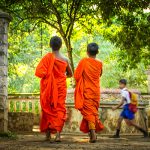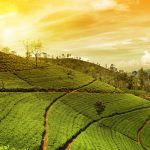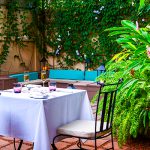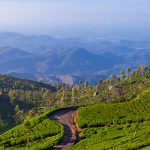INSIDE SRI LANKA A monthly insider’s report by Royston Ellis, January 2015.
January in Sri Lanka brings some exciting events this New Year.
Is it safe?
Yes, Sri Lanka is a safe country for tourists to visit. In January, though, there are a couple of high profile events during which visitors would be smart to observe the British Foreign & Commonwealth Office’s advice of “avoid any political gatherings or rallies.”
On Thursday 8 January 2015 there is an election being held to choose the country’s next president, either the incumbent (who’s been there since 2005) or one of a score of rivals. It won’t be a calm affair. Then from Tuesday 13 to Thursday 15 January, His Holiness Pope Francis is paying a visit to Colombo and also to Madhu, a Roman Catholic shrine in the recently re-opened north of the country.
To cap all that, Thursday 15 January is the day of the Tamil Thai Pongal festival, an ancient thanksgiving harvest festival celebrated by Hindus the world over. Houses are decorated with mango and plantain leaves and the hearth is decorated with rice flour as the Tamil farming community and their supporters share happiness with nature.
Another happening coming up, on Tuesday 3 February, is the annual Navam Perahera organised by the Gangaramaya Temple in Colombo (see blog for November 2014). This is a lavish procession of elephants, fire eaters, jugglers and acrobats on the occasion of the Navam Full Moon Poya Day and is an awe-inspiring spectacle. Remember: all bars (even hotel ones) are closed every Full Moon Poya Day in Sri Lanka.
Street Art
If you can get to Colombo on Sunday 25 January you can join in the celebration of the astonishing artistic talent of Sri Lankans when the annual open air art fair called the Kala Pola is held in the city.
‘Pola’ means fair or market in English and ‘Kala’ (if you say it a certain way) seems to be ‘colour.’ A colloquial phrase in Sinhala is kalabala which – according to ‘A Dictionary of Sri Lankan English’ by Michael Meyler – means ‘gaudy, cluttered, over decorated, as in “I don’t like his pictures, they’re too kalabala.”
There’s plenty of that in fair, as well as some stunning work, all of which is on sale. Many paintings get snapped up by boutique hotel owners to adorn their walls, and there’s a lot of bargaining as the artists know the value of their work but many potential buyers prefer to pay less.
As in all temporary markets, if you want the best, go early (it starts at 8am); for bargains, go late (it closes at 9pm).
The Kala Pola (this is the 22nd one) is organised by the George Keyt Foundation to encourage artists. George Keyt (1901-1993) is regarded as Sri Lanka’s most distinguished modern painter with style veering towards cubism but dynamic in its representation of local life and religious fables.
This year’s fair is being held in Rajakeeya Mawatha, Colombo 7. There will be sculptures as well as paintings and brave painters will even sketch or paint sitters in demand, such as this painting of my house manager done on the spot a couple of years ago.
Sweet Souvenir
Almost every visitor to Sri Lanka takes home some Pure Ceylon Tea as a souvenir. The island produces many other products that would delight household cooks. There are fabulous authentic spices obtained at source, such as long quills of cinnamon and fresh cardamom pods that add a kick to coffee.
There’s also a sweet surprise in genuine, natural wild bee honey. My favourite comes from the forests of the Uva province (where, coincidentally, the finest tea comes from too). It can be bought in tiny plastic bottles containing 100ml for Rs220 (£ 1.10) from major supermarkets, so you don’t have to journey to Buttala where it is bottled. Buttala is a hamlet by the A4 highway that links Colombo via Avissawella, Ratnapura and Beragala, across the island to Monaragala, Potuvil and the east coast.
This “pure bee honey” is thin but rich in flavour that lingers on the palate. The label adds a note of caution, “Colour and flavour may vary according to the near by flora.” That surely proves its genuine if its appearance depends on which flowers the bees have been buzzing around.
Unusual vegetables
Sri Lanka’s village markets are not only fantastic places for some colourful evocative photography (of customers, vendors and merchandise) but also for discovering some very unusual vegetables. There are items on display you probably never realised could be eaten, like odd roots and vegetables you’ve probably never seen before.
That’s how I discovered this unusual looking prickly green thing that I thought might be a fruit since it vaguely resembled a rambutan with its protective hairy shell. However, it is not a fruit but a vegetable, a kind of gourd, called in Sri Lanka, Tumba Karavila. Elsewhere it’s sometimes called spicy bitter cucumber. It’s supposed to have medicinal properties as well as being edible when curried.
I also found these berries, called thibbatu in Sinhala, which are related to eggplant although in taste these berries were more like a curried fruit, but delicious. The berries are supposed to be good for the digestion and for respiratory diseases.
Research reveals the scientific name is solanum torvum and is known in English as Turkey Berry, Devil’s Fig, Pea Eggplant and even Prickly Nightshade. It is used as an ingredient in Thai Green Curry, in Jamaican and African dishes, and in Haitian voodoo rituals.
If ever you’re tempted to buy these unusual vegetables, go ahead! The cook where you are staying (if you’re in a guest house or boutique villa and not in a posh hotel) will be thrilled to show his/her skill by turning that odd looking veggie into a memorable curry.
A British resident of Sri Lanka since 1980, Royston Ellis is an erstwhile beat poet and author of “The Bradt Guide to Sri Lanka.” His most recent book is “Cliff Richard and The Shadows, a Rock ‘n’ Roll Memoir.” (Tomahawk Press, UK). His weekly blog is available by free subscription from www.roystonellis.com




